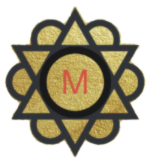
Understanding Tarot Card Meanings
When it comes to tarot card readings, understanding the meanings behind each card is essential. Tarot cards have been used for centuries as a tool for divination and self-reflection. Each card in the deck holds a unique symbolism and interpretation, providing insights into various aspects of life, relationships, and personal growth.
The Major Arcana
The tarot deck is divided into two main sections: the Major Arcana and the Minor Arcana. The Major Arcana consists of 22 cards, each representing a significant life lesson or a major event. These cards are often seen as the core of a tarot reading and carry a powerful energy.
Each card in the Major Arcana has its own distinct meaning and symbolism. For example, The Fool represents new beginnings and taking risks, while The Magician signifies manifestation and the power of intention. The meanings of these cards can vary depending on the context of the reading and the surrounding cards.
The Minor Arcana
The Minor Arcana consists of 56 cards divided into four suits: Wands, Cups, Swords, and Pentacles. Each suit represents a different aspect of life, such as creativity, emotions, intellect, and material possessions. The Minor Arcana cards are often associated with everyday situations and provide more specific guidance.
Within each suit, there are four court cards (Page, Knight, Queen, and King) and ten numbered cards (Ace through Ten). The court cards often represent people or personality traits, while the numbered cards offer insights into different stages or energies related to the suit.
Interpreting Tarot Card Meanings
When interpreting tarot card meanings, it’s important to consider the symbolism, imagery, and intuition. While there are traditional interpretations for each card, it’s essential to trust your intuition and personal connection to the cards. Tarot readings are highly subjective, and the meanings can vary based on the reader’s intuition and the querent’s (person receiving the reading) unique situation.
Here are a few tips for interpreting tarot card meanings:
- Consider the card’s symbolism: Pay attention to the imagery, colors, and symbols on each card. These elements can provide additional insights and help you connect the card’s meaning to the querent’s situation.
- Look at the card’s position: The position of the card within the spread can influence its meaning. For example, a card in the past position may represent past experiences or influences, while a card in the future position can indicate potential outcomes or upcoming events.
- Consider the surrounding cards: The cards surrounding the main card can offer further context and clarification. Look for patterns, connections, or contrasting energies between the cards to deepen your interpretation.
- Trust your intuition: As a tarot reader, your intuition plays a crucial role in interpreting the cards. Allow your intuition to guide you and trust the messages that come through during the reading.
Using Tarot Card Meanings as a Tool
Understanding the meanings behind tarot cards can be a powerful tool for self-reflection, personal growth, and gaining insights into various aspects of life. Tarot readings can provide guidance, clarity, and a fresh perspective on challenging situations.
While the tarot cards themselves hold symbolic meanings, it’s important to remember that they are just a tool. The true power lies within the reader and their ability to tap into their intuition and connect with the querent’s energy.
Whether you are a seasoned tarot reader or just starting your journey with tarot, exploring the meanings of the cards can deepen your understanding and enhance your readings. Remember to approach tarot readings with an open mind and a willingness to explore the depths of the cards’ wisdom.








